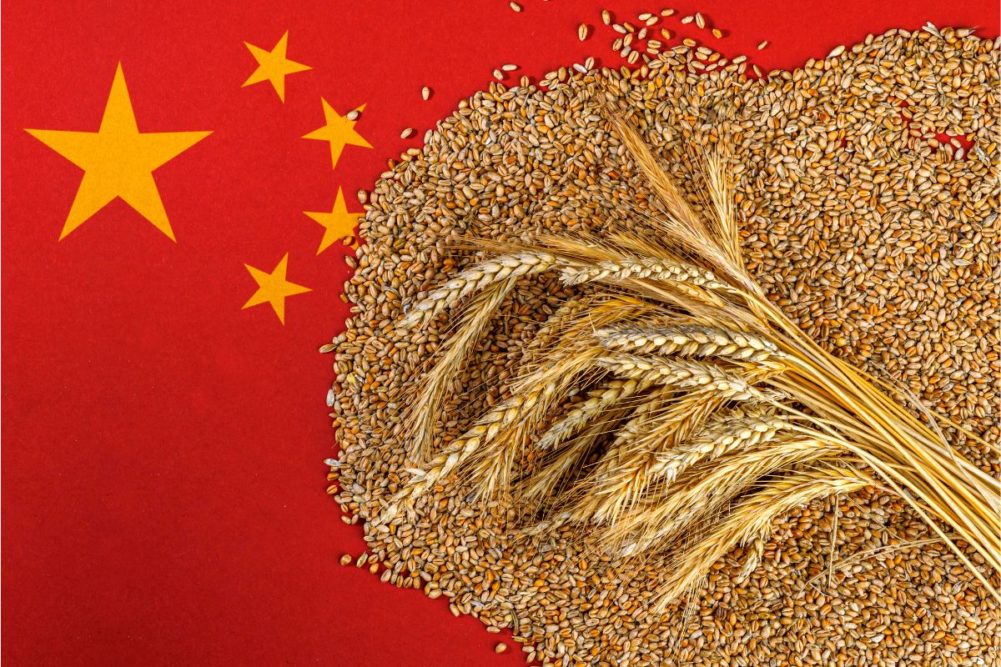China significantly reduces its wheat purchases

China’s grain imports plunged in September.
Wheat imports were down 57 per cent year on year, while corn purchases plunged 81 per cent.
It is the second straight month of poor sales volumes for the world’s largest wheat and corn importer.
The U.S. Department of Agriculture has penciled in 12 million tonnes of Chinese wheat imports in 2024-25 and 19 million tonnes of corn.
“Right now, they’re tracking way below those numbers,” said Neil Townsend, chief market analyst with GrainFox.
China was Canada’s largest wheat market in 2023-24, purchasing 3.1 million tonnes of the crop, according to Canadian Grain Commission data.
It was also the biggest buyer the previous year, importing 2.97 million tonnes.
Sales to the Asian giant are down substantially through the first two months of the 2024-25 crop year with 155,700 tonnes on the books compared to 418,100 tonnes a year ago.
“I don’t think we have any worries right now,” said Townsend.
He is anticipating strong demand for Canadian wheat from other markets because Russia has a smaller crop and government export constraints, the European Union has quality issues and Australia might have frost damage.
“Over the course of the year there could just be more and more demand for Canadian wheat,” he said.
“If we don’t sell to China, there’s going to be markets that will buy (wheat) from us elsewhere.”
Winter wheat crops are also off to a poor start around the world.
“It’s super early, but it’s bone dry in Kansas, it’s bone dry in Ukraine, bone dry in Russia and it’s too wet in France,” said Townsend.
He is not sure why China’s grain imports are down. It could be fiscal reasons due to its struggling economy.
Or it could be political reasons with all the talk surrounding tariffs in the U.S. election campaign. China might be trying to “gain some leverage” by slowing down imports of important U.S. commodities.
Or it might just be because China harvested big crops of wheat and corn. China’s ministry of agriculture and rural affairs says the country’s grain output is forecast to hit a record 700 million tonnes this year.
China’s winter wheat crop, which accounts for 95 per cent of the country’s production, was harvested in June. The spring wheat and corn harvest was completed in September and October.
Townsend said China’s corn futures price on the Dalian Commodity Exchange has been falling, which would corroborate reports of a record crop.
“It could be simply that they don’t need to buy right now,” he said.
MarketsFarm analyst Bruce Burnett noted that China had a big push on wheat imports last year.
“It was probably due to quality issues,” he said.
So, it’s not surprising that this year’s early import numbers are much lower than last year’s.
It tells him that China’s crop is closer to normal this year, which is what the government officials are saying.
Burnett said China’s slowdown in pork consumption could be affecting corn demand, but he thinks it is more likely the harvest pressure.
The country’s milling wheat demand will be determined by how much it has in reserve. China’s winter wheat harvest won’t have much influence on spring wheat imports because it’s a different type of wheat.
He said China’s economic slowdown could have an impact on the country’s demand for milling wheat.
But overall, he is in the same camp as Townsend about China’s slumping imports.
“I’m not really that worried about it,” said Burnett.
For almost 30 years of expertise in the agri markets, UkrAgroConsult has accumulated an extensive database, which became the basis of the platform AgriSupp.
It is a multi-functional online platform with market intelligence for grains and oilseeds that enables to get access to daily operational information on the Black Sea & Danube markets, analytical reports, historical data.
You are welcome to get a 7-day free demo access!!!
Read also
Crop & Price Navigator 2026/27: Black Sea and Danube. Forecast
US explores Africa as a potential new market for soy exports
Corn remains to be harvested in Ukraine from 22% of the area
AD Ports Group and Louis Dreyfus Company have agreed to establish a grain terminal...
Ukraine called on PACE to strengthen international mechanisms to protect food secu...
Write to us
Our manager will contact you soon



